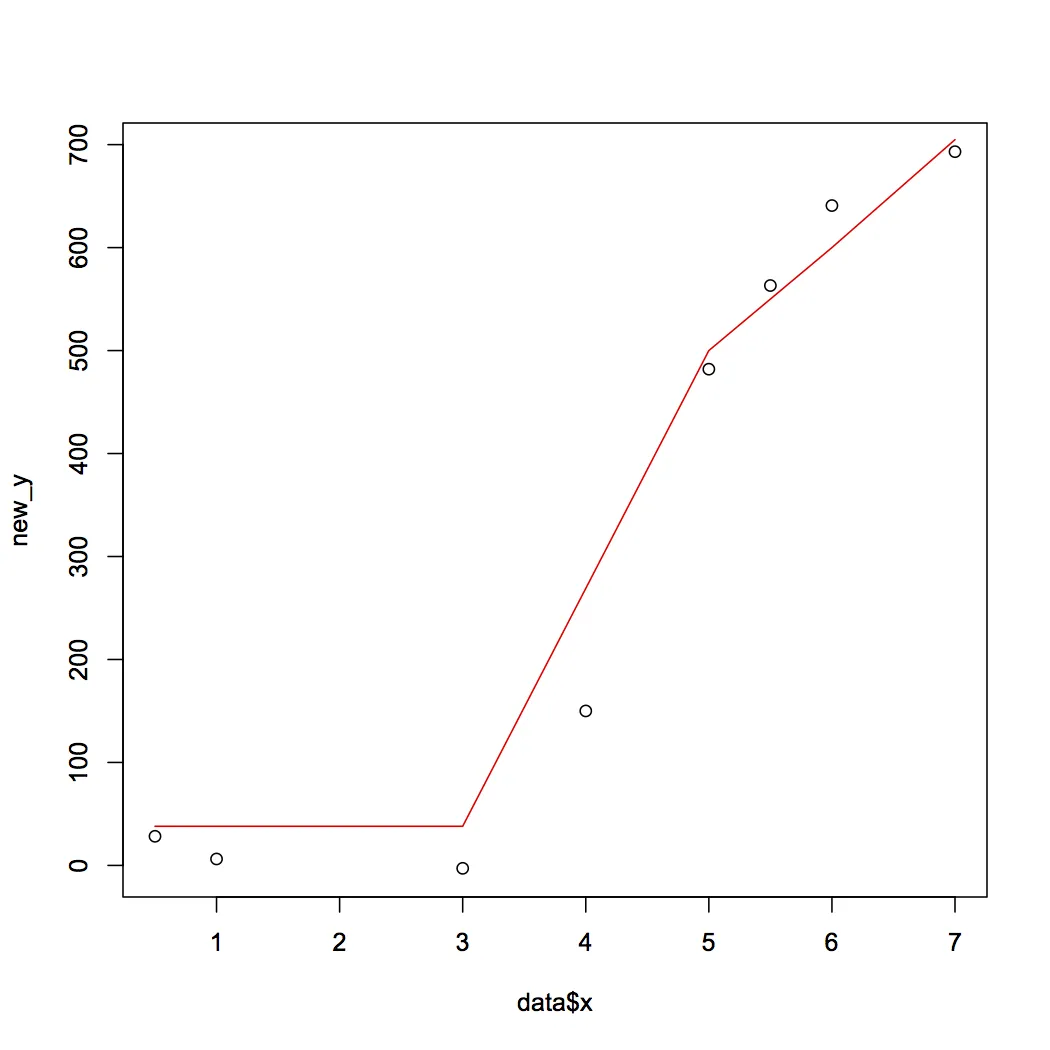如何使用 lowess 重现使用 loess 拟合的结果?
loess 代码:
> data = data.frame(x=c(1,0.5,3,4,5,5.5,6,7), y=c(10, 25, 38, 44.5, 500, 550, 600, 705))
> fit = loess("y ~ x", data=data)
> new_y = predict(fit, data$x)
> new_y
[1] 6.251022 28.272100 -2.840750 150.006042 481.927307 563.161187 640.825415 693.166150
lowess code:
> new_fit = lowess(data, f=0.8)
> new_fit
$x
[1] 0.5 1.0 3.0 4.0 5.0 5.5 6.0 7.0
$y
[1] -4.330119 38.931265 255.000000 400.000000 500.000000 550.241949 601.519903 704.247275
这些结果有很大的不同。我正在尝试根据给定的
x值获取新的适配y值。loess可以提供。[1] 6.251022 28.272100 -2.840750 150.006042 481.927307 563.161187 640.825415 693.166150
lowess 返回:
[1] -4.330119 38.931265 255.000000 400.000000 500.000000 550.241949 601.519903 704.247275
我该如何重写lowess函数调用,以便为新的y值提供与使用loess拟合和x值的predict函数非常相似的结果?谢谢。
